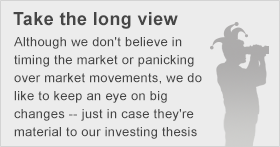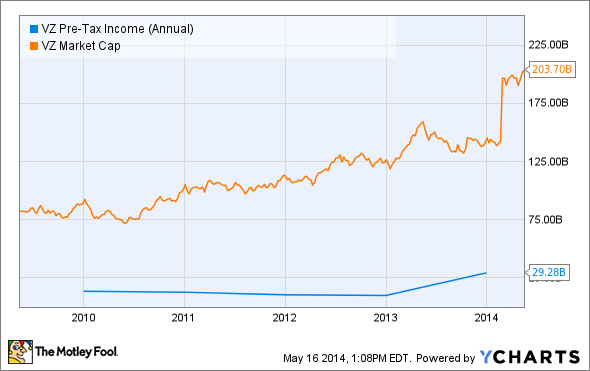Filed under: Investing
Don't be surprised if the share prices of LED manufacturers pop in the coming years. The LED lighting industry -- worth about $4.8 billion in 2012 -- will continue to grow 45% annually until 2019, according to Wintergreen Research. The research firm believes that sliding LED prices and rising environmental concerns will be the key drivers of growth. Which companies stand to benefit from this expected change in light bulb consumption? Let's find out.
Leveraged growth
Cree is one of the leading LED manufacturers in the world. It has played a vital role over recent years in pushing down LED bulb prices to practical price points below $20. Its efforts have in turn sparked the demand for LED bulbs that has stimulated growth in the industry.
Regarding market exposure, in the previous quarter Cree generated about 58% of its overall revenue from the sales of its LED bulbs, with about 9% global market share. The LED maker leads the industry not only by market share, but also in terms of innovation and growth.
Despite intensifying market competition and sliding LED prices, Cree recently managed to expand its quarterly gross margins by 180 basis points on a year-over-year basis. This margin expansion was driven by its low-cost products and high factory utilization rate. Its LED sales also increased 3% over the same period.
Management expects its factory utilization rate to remain at elevated levels, which should theoretically translate into sustained cost benefits. Additionally, Cree's LED cost reduction measures, which were just implemented in its previous quarter, should further add to its cost benefits in its next quarter.
Cree is looking like a great way to tap the expected explosive growth in the global LED lighting industry.
Diversified growth
General Electric is another LED-focused lighting solutions provider. The conglomerate solidified its foothold in the industry by acquiring key LED lighting and fixture companies over the recent years. Its investments in the field, in turn, are driving its top-line growth.
GE's appliance and lighting division posted sales of $1.857 billion in the first quarter of fiscal year 2014, representing about 5.4% of its overall revenue. More importantly, the segment posted a spectacular growth of 33% on a year-over-year basis -- faster than GE's most mature business divisions.
The conglomerate unveiled six new LED bulbs over the recent months. Management expects these launches to further propel the growth of its lighting division in the next quarter.
Risk-averse investors looking for diversified growth should therefore consider investing in GE. It has established operations and distribution channels in about 150 countries, which suggests that the LED maker won't have to struggle to find willing buyers. Plus, its diversified operations will result in balanced growth.
Growth from retail operations
Amid this war of LED manufacturers, Wal-Mart stands to benefit as well. The retail giant has tied up with China-based lamp vendor TCP to bring LED bulbs to the U.S. at price points below $10.
Since these bulbs are priced well below equivalent offerings from Cree and GE, Piper Jaffray's Jagadish Iyer concluded last year that OEMs like Cree will lose their competitive edge. Things have changed since then, though.
After months of usage, consumers have reported that Wal-Mart's relatively inexpensive LED bulbs have flickering and flashing problems. Needless to say, the retailer's pricing advantage will fade away if consumers continue to face such problems.
Foolish final thoughts
The LED lighting industry has become hyper-competitive over the recent months. In such scenarios, it's rewarding to invest in industrywide leaders. Investors therefore might want to consider investing in GE and Cree to hedge their risks and balance their rewards.
The greatest thing Warren Buffett ever said
Warren Buffett has made billions through his investing and he wants you to be able to invest like him. Through the years, Buffett has offered up investing tips to shareholders of Berkshire Hathaway. Now you can tap into the best of Warren Buffett's wisdom in a new special report from The Motley Fool. Click here now for a free copy of this invaluable report.
The article Here's Why Cree and General Electric Company Are Set to Outperform originally appeared on Fool.com.
Piyush Arora has no position in any stocks mentioned. The Motley Fool owns shares of General Electric Company. Try any of our Foolish newsletter services free for 30 days. We Fools may not all hold the same opinions, but we all believe that considering a diverse range of insights makes us better investors. The Motley Fool has a disclosure policy.Copyright © 1995 - 2014 The Motley Fool, LLC. All rights reserved. The Motley Fool has a disclosure policy.
Read | Permalink | Email this | Linking Blogs | Comments






























